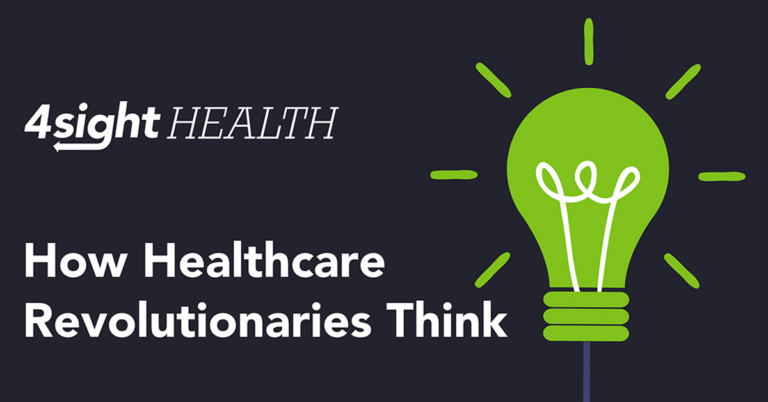May 20, 2021

Healthy Multipliers for Our Society
Improving communities’ environments to make the healthy choice the easy choice is the single best intervention to help everyone, regardless of socioeconomic status, live a longer, happier and healthier life.
The “Social Determinants of Health” (SDoH) is a neutral, all-encompassing term that now commonly refers to the metrics that measure health and well-being. Diagnosing and describing the etiology of a disease or condition, in the current example — SDoH, is only the first step to addressing 80% of preventable illnesses. [1]
Getting to effective, long-term, cost-effective, and equitable “treatments” is the perfect complement but thus far has not been given a title. And that’s why we need a term for factors that improve health. “Healthy Multipliers” recognizes both the causes and solutions that can change the course of health and wellness for individuals, organizations, communities, and entire states.
Unwittingly but altruistically, the Surgeon General addressed the “Healthy Multipliers” in a recent online publication. The Surgeon General’s report suggesting that businesses engage as stewards, listing the following essentials:
- Basic needs for health and safety, such as clean air and water, nutritious food, and a safe environment.
- Meaningful work and wealth, including employment, job training, financial savings and security.
- Humane housing, such as safe structures, affordable costs, diverse neighborhoods, and proximity to work, school, and recreation.
- Reliable transportation, including efficiencies in time and energy use and opportunities for active transportation.
- A thriving natural world, such as a healthy environment and green spaces, and protections from such threats as heat and wind.
- Lifelong learning, including literacy and numeracy skills, quality early-child,elementary and high school education, and access to career and adult education.
- Belonging and civic muscle, a term demonstrating engagement within the community. Conveying a sense of inclusion and the power to influence policies and practices that shape the world is part of corporate responsibility. [2]
Clearly, the opportunities abound for effective programs to change culture, thus creating meaningful improvement. As noted above, the SDoH account for about 80% of a person’s well-being. Fortunately, with time, patience, and persistence, these characteristics can be nudged in a positive direction. The all-encompassing term, “Healthy Multipliers,” should be accelerated. Four million people in fifty-seven communities are already benefiting from success in the very satisfying journey. [3]
Current Partial Solutions

The answer is complex, certainly not due to a lack of altruism, competence, or concern, but rather a focus on healing the sick, bombarded by the “tyranny of the present.” The way people see things now can make imagining a different future difficult. “It has always been this way,” or “We are just too busy caring for our current stressors to take on anything else right now,” are two understandable human reactions.
Sadly, learned helplessness also contributes to the maintaining the status quo. The Oxford dictionary definition of learned helplessness is “a condition in which a person suffers from a sense of powerlessness, arising from a traumatic event or persistent failure to succeed. It is thought to be one of the underlying causes of depression.” Well intentioned “helpers” coming into a community to study a problem, but then leaving before implementing a successful solution, foster frustration and reinforce learned helplessness.
For some intercity or rural regions, the daunting task of raising the entire community’s social determinants of health remains overwhelming, thus inhibiting even starting. Notable individuals
have broken away from multigenerational poverty and embraced the American dream. Others, less fortunate, get drawn into a vortex that remains self-renewing in a bad way.
Addressing the Healthy Multipliers
Fortunately, better options are available but do require an initial expenditure of time, energy, and capital. The long-term investment reaps huge rewards for both individuals across the socioeconomic spectrum and communities ranging from desolate rural to dense urban.
A few major forces continue to slow progress to a comprehensive successful long-term solution.
- Hospitals, healthcare systems, physicians, and all care-providers focus and train to diagnose and treat disease. And we are the best in the world — if you are seriously ill, you want treatment in America.
- Fee-for-service, the traditional payment system, does not reward prevention. Payment models for value and any form of capitation (Medicare Advantage, managed Medicaid, etc.) are more available and will benefit systems (including insurance companies) that care for or insure healthier populations.
- Traditional care delivery systems are integrating altruistic programs to improve negative SODH, however these programs are resource-intense and narrowly focused. In general, these programs do not have robust metrics or built-in plans for sustainability.
- Some of the large philanthropic healthcare systems are developing their own prevention programs, mostly focused on discrete issues — housing, food deserts, transportation, violence, and other societal maladies.
- Other groups of altruistic healthcare organizations admirably fund local projects. However, long-term sustainability is a realistic concern, particularly with profit-margin squeeze caused by decreased reimbursement and increased expenses.
The positive energy and commendable image created by the above endeavors do give a short-term “high.” Without long-term objective measurable outcomes, these programs will sadly wither away much the same way previous projects lost their luster and became an unexpected tax on the sponsoring institution.
The biblical metaphor of teaching a person to fish rather than giving them a fish perfectly captures the necessity for self-sufficiency and sustainability. That approach avoids the tragedy of returning to a community five years later and finding the region unchanged because the altruistic people could not gather the “activation energy” to overcome the inertia of the present system.
Now is the time to embrace processes with objective, measurable health outcomes. Healthcare systems’ core competency is caring for sick patients. Governmental and social service agencies
are motivated to improve deleterious social determinants of health but focus on regulations or response to acute problems. Philanthropic foundations are highly altruistic but typically lack
operational skills. Importantly and mercifully, combining all the attributes and abilities of these organizations can multiply the social determinants of health for the benefit of organizations, communities, regions, and entire states.
Branching into prevention is a new and necessary adventure resulting in objective outcomes. The Surgeon General’s seven recommendations should be widely distributed and adapted by responsible entities. The Surgeon General has an effective platform to share best practices.
As the nation enters the post-COVID era, opportunities abound to change the approach needed to help everyone live a longer, happier, and healthier life. Addressing the social multipliers of health is a proven effective therapy.
4sight Health contributors recognize that we can’t fix the broken U.S. healthcare system without reducing the causal negative social determinants of health. Here are some 4sight Health articles with different perspectives on this issue.
- Public Health and Healthcare in Post-COVID America: Innovative Solutions for a Healthier, More Prosperous Society
By David Johnson, Court H. Houseworth, Kyle Stern - Pandemics Cubed: Social Injustice and Chronic Disease Amplify COVID-19’s Virulence
By Allen Weiss - The Proof Case for Addressing the Negative Social Determinants of Health
By Allen Weiss
Sources
- “Class — The Ignored Determinant of the Nation’s Health,” by Stephen L. Isaacs, and Steven A. Schroeder, NEJM, September 2004.
- “Executive Summary of Community Health and Economic Prosperity,” January 2021.
- Blue Zones Project by Sharecare.





